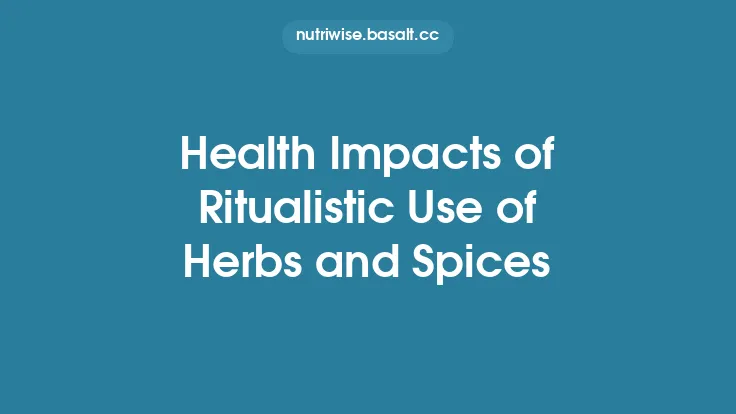Sacred food offerings have been a cornerstone of human spirituality for millennia, serving as tangible expressions of devotion, gratitude, and communion with the divine. While their primary purpose is ritualistic, the ingredients, preparation methods, and communal contexts of these offerings often embody a wealth of nutritional wisdom that transcends cultural boundaries. This guide explores the timeless aspects of sacred food offerings, delving into the botanical, biochemical, and physiological attributes that contribute to health, and highlighting how these practices have preserved beneficial dietary patterns across generations.
Historical Roots of Sacred Food Offerings
Across continents, ancient societies have designated specific foods as “sacred” and presented them to deities, ancestors, or natural forces. In the Vedic tradition of India, prasada—cooked grains, fruits, and dairy—was offered to the gods before being shared with the community. In ancient Egypt, bread and beer were placed on altars to honor Osiris, symbolizing sustenance and rebirth. Indigenous peoples of the Americas prepared corn mush and herbal teas as offerings to the earth mother, while Japanese Shinto shrines present rice, sake, and seasonal fruits to kami.
These offerings were not arbitrary; they reflected the agricultural bounty, seasonal cycles, and local ecosystems. By selecting foods that were nutritionally dense and readily available, early cultures ensured that the act of offering also reinforced communal health and resilience.
Common Ingredients in Sacred Offerings and Their Nutritional Profiles
| Ingredient | Typical Cultural Context | Key Nutrients & Bioactives |
|---|---|---|
| Whole Grains (e.g., rice, barley, millet) | Indian prasada, Egyptian bread, Japanese mochi | Complex carbohydrates, B‑vitamins, magnesium, phytosterols |
| Legumes (e.g., lentils, chickpeas, beans) | Hindu *dal offerings, African nyembwe* | Plant protein, iron, folate, resistant starch |
| Dairy (e.g., ghee, yogurt, milk) | Vedic *ghee, Greek kefir* in Orthodox rites | Saturated fats (in moderation), calcium, conjugated linoleic acid (CLA) |
| Fruits (e.g., pomegranate, banana, mango) | Buddhist *tang* offerings, Mayan cacao rituals | Vitamin C, potassium, polyphenols, flavonoids |
| Nuts & Seeds (e.g., sesame, pumpkin seeds) | Buddhist *tahini* offerings, Native American seed cakes | Vitamin E, omega‑6 fatty acids, phytosterols |
| Fermented Products (e.g., tempeh, miso, kombucha) | Shinto *amazake, Ethiopian teff injera* | Probiotics, B‑vitamins, bioactive peptides |
| Herbal Additives (e.g., holy basil, sage, frankincense) | Hindu *tulsi* leaves, Christian incense | Essential oils, terpenes, antioxidant polyphenols |
These ingredients are repeatedly chosen across disparate traditions, underscoring a convergent understanding of their health-promoting properties.
Preparation Techniques and Their Impact on Nutrient Retention
Sacred offerings are often prepared using methods that enhance digestibility and preserve bioactive compounds:
- Steaming and Boiling – Common for rice, grains, and legumes, these gentle heat processes retain water‑soluble vitamins (e.g., B‑complex) while gelatinizing starches, making them easier to digest.
- Roasting and Toasting – Used for nuts, seeds, and certain grains, this technique induces Maillard reactions that develop flavor and generate melanoidins, which possess antioxidant activity.
- Fermentation – A hallmark of many offerings (e.g., tempeh, miso, kombucha), fermentation breaks down antinutrients such as phytic acid, liberates minerals, and introduces probiotic microorganisms that support gut health.
- Clarified Butter (Ghee) Preparation – The process of removing milk solids from butter eliminates lactose and casein, concentrating short‑chain fatty acids (SCFAs) like butyrate, which have anti‑inflammatory effects on the intestinal lining.
- Sun‑Drying and Dehydration – Employed for fruits and herbs, this method concentrates sugars and phytochemicals while preserving heat‑sensitive vitamins when performed at low temperatures.
By adhering to these time‑tested techniques, sacred food offerings often achieve a balance between palatability, spiritual symbolism, and nutritional integrity.
Microbial and Fermentation Aspects in Traditional Offerings
Fermented foods occupy a central place in many ritualistic cuisines. The microbial consortia—*Lactobacillus, Bifidobacterium, Rhizopus* spp., and yeasts—perform several health‑relevant functions:
- Enhanced Vitamin Synthesis: Certain strains synthesize B‑vitamins (e.g., B12, riboflavin) that are otherwise scarce in plant‑based diets.
- Production of Bioactive Peptides: Proteolysis during fermentation releases peptides with antihypertensive and immunomodulatory properties.
- Modulation of Gut Microbiota: Regular consumption of fermented offerings can increase microbial diversity, a marker linked to metabolic stability and reduced inflammation.
For example, the Ethiopian *injera (fermented teff flatbread) contains a symbiotic culture of Lactobacillus and Saccharomyces* that contributes to its characteristic sour taste and improves the bioavailability of iron and calcium.
Phytochemicals and Bioactive Compounds in Ritual Foods
Many sacred foods are rich in phytochemicals that exert systemic effects:
- Polyphenols (e.g., anthocyanins in pomegranate, catechins in green tea) act as potent antioxidants, scavenging free radicals and protecting cellular membranes.
- Terpenes (e.g., eugenol in holy basil, limonene in citrus) possess anti‑microbial and anti‑inflammatory activities, supporting immune surveillance.
- Alkaloids and Saponins (e.g., theobromine in cacao, diosgenin in fenugreek) influence hormone regulation and may improve lipid metabolism.
These compounds often synergize with macronutrients, enhancing overall nutrient absorption and metabolic efficiency.
Immunomodulatory and Anti‑Inflammatory Potential
The convergence of micronutrients, probiotics, and phytochemicals in sacred offerings creates a multi‑layered defense against chronic inflammation:
- Short‑Chain Fatty Acids (SCFAs) produced by gut microbes from fermentable fibers (e.g., in legumes and whole grains) activate G‑protein‑coupled receptors that down‑regulate pro‑inflammatory cytokines.
- Vitamin D and Calcium from dairy components support innate immunity by promoting antimicrobial peptide synthesis.
- Omega‑3 and Omega‑6 Fatty Acids from nuts and seeds balance eicosanoid pathways, reducing the synthesis of pro‑inflammatory prostaglandins.
Collectively, these mechanisms contribute to a lower baseline inflammatory state, which is associated with reduced risk of cardiovascular disease, certain cancers, and autoimmune disorders.
Cardiovascular and Metabolic Implications
Regular inclusion of sacred offering ingredients can favor cardiovascular health:
- Fiber‑Rich Grains and Legumes lower LDL cholesterol by binding bile acids and facilitating their excretion.
- Polyphenol‑Dense Fruits improve endothelial function through nitric oxide modulation.
- Fermented Dairy (e.g., ghee, kefir) provides conjugated linoleic acid (CLA), which has been shown in animal models to improve insulin sensitivity and reduce adiposity.
Moreover, the low glycemic index of many whole‑grain and legume‑based offerings helps maintain stable blood glucose levels, mitigating the risk of type‑2 diabetes.
Mental and Neurological Benefits Linked to Sacred Foods
Beyond physical health, several components of sacred offerings influence brain function:
- Tryptophan‑Rich Foods (e.g., dairy, nuts) serve as precursors for serotonin, a neurotransmitter involved in mood regulation.
- Flavonoids (e.g., quercetin in onions, catechins in tea) cross the blood‑brain barrier and exhibit neuroprotective effects, enhancing memory and reducing oxidative stress in neuronal tissue.
- Probiotic Fermented Products modulate the gut‑brain axis, influencing stress response and cognitive performance through vagal signaling and short‑chain fatty acid production.
These findings suggest that the ritual consumption of such foods may contribute to a sense of well‑being that aligns with their spiritual intent.
Practical Ways to Honor Traditional Offerings While Maintaining Modern Nutrition
- Seasonal Alignment – Choose ingredients that are locally in season, mirroring the original context of many offerings and ensuring peak nutrient density.
- Minimal Processing – Preserve whole‑food integrity by avoiding excessive refining; for instance, use whole‑grain flours instead of white flour when preparing ceremonial breads.
- Balanced Portions – While the spiritual act emphasizes sharing, mindful portioning ensures that the nutritional benefits are accessible without excess caloric intake.
- Community Preparation – Engaging multiple participants in the cooking process replicates the communal aspect of ancient rituals, fostering social cohesion—a known determinant of health.
- Respectful Adaptation – When substituting ingredients due to dietary restrictions, retain the core nutritional profile (e.g., replace dairy ghee with clarified coconut oil for a vegan alternative while preserving the high‑temperature cooking stability).
These strategies allow contemporary practitioners to experience the health advantages embedded in sacred offerings without compromising cultural authenticity.
Preservation of Cultural Knowledge and Health Wisdom
Documenting the recipes, preparation methods, and symbolic meanings of sacred food offerings safeguards a repository of empirical nutrition knowledge accrued over centuries. Ethnobotanical studies have shown that many traditional foods predate modern scientific validation, highlighting the importance of interdisciplinary collaboration between cultural anthropologists, nutrition scientists, and healthcare providers. By integrating this wisdom into public health curricula and community outreach, societies can leverage time‑tested dietary patterns to address modern health challenges.
Concluding Thoughts
Sacred food offerings stand at the intersection of spirituality, culture, and nutrition. Their enduring presence across civilizations reflects a collective intuition that the foods we present to the divine are, in turn, gifts to our bodies. Through careful selection of nutrient‑dense ingredients, time‑honored preparation techniques, and communal sharing, these offerings deliver a spectrum of health benefits—from bolstering immunity and cardiovascular function to supporting mental clarity. Recognizing and preserving this evergreen knowledge not only honors cultural heritage but also enriches contemporary approaches to holistic well‑being.





